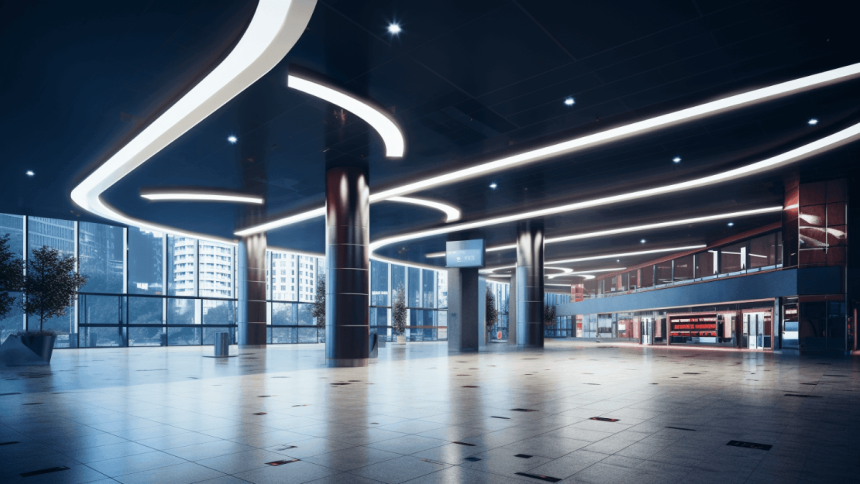The landscape of commercial lighting has experienced a dramatic shift over the past two decades. Traditional incandescent and fluorescent lighting once dominated offices, warehouses, and retail environments. However, as energy efficiency and sustainability became priorities for businesses, the need for more advanced lighting solutions emerged. This evolution paved the way for Light Emitting Diodes (LEDs), particularly diode-based LED systems, to enter the mainstream with compelling benefits.
Unlike older lighting technologies that rely on heated filaments or gas discharges, LEDs use semiconductors to emit light. This innovation not only results in a much longer lifespan but also drastically reduces energy consumption. Diode LEDs, in particular, are engineered for optimal performance, capable of delivering consistent brightness with minimal power draw. These attributes have positioned diode LEDs as an intelligent investment for commercial entities seeking operational efficiencies and lower overhead costs.
Furthermore, the transition to diode LED technology aligns with broader trends in smart building design. Today’s businesses prioritize systems that offer greater control, adaptability, and integration with digital infrastructure. Diode LEDs support these goals with features like dimming capabilities, color tuning, and programmable behavior. As a result, they are now central components in the push toward environmentally responsible and technologically sophisticated commercial spaces.
Efficiency That Drives the Bottom Line
One of the most compelling reasons for the growing adoption of diode LEDs in commercial settings is their unparalleled energy efficiency. Traditional lighting systems can waste a significant amount of energy in the form of heat. In contrast, diode LEDs convert a larger proportion of electrical energy directly into visible light, minimizing waste and maximizing output. This translates into tangible savings on utility bills, especially in facilities where lighting operates continuously.
The cost-saving implications of diode LED technology are not confined to electricity use alone. Maintenance expenses are also significantly reduced due to the extended lifespan of LED fixtures. Where a fluorescent tube may need replacing after a few thousand hours, many diode LEDs function efficiently for over 50,000 hours. This longevity means fewer replacements, less downtime, and reduced labor costs—key factors in large-scale commercial operations with vast lighting networks.
Moreover, businesses today are held accountable for their environmental impact. Energy-efficient lighting contributes positively to sustainability targets and corporate social responsibility goals. The adoption of diode LED systems supports green certifications such as LEED (Leadership in Energy and Environmental Design) and can improve a company’s public image. Forward-looking companies increasingly recognize that efficient lighting is not just a cost-saving tool, but a strategic asset in a broader sustainability narrative.
The Role of Quality and Product Selection
Choosing the right lighting system is critical to reaping the full benefits of diode LED technology. Not all LEDs are created equal, and the market is filled with variations in quality, output, and design. Commercial installations demand high-performance fixtures that deliver uniform lighting, withstand intensive use, and integrate easily with existing infrastructure. These requirements necessitate partnering with reputable suppliers and selecting products specifically designed for commercial-grade applications.
One such provider offering a diverse array of commercial-grade diode LED options is Buy Rite Electric, an online destination trusted by industry professionals since 1986. They provide a curated selection of diode LED solutions that align with both performance standards and aesthetic considerations. By offering only top brands and emphasizing customer service, Buy Rite Electric simplifies the selection process for commercial projects where reliability is paramount.
Evaluating diode LED products involves looking beyond the initial price tag. Factors such as lumen output, color temperature, CRI (Color Rendering Index), and heat management systems should influence purchasing decisions. In commercial settings, poor lighting can affect everything from employee productivity to customer satisfaction. As such, investing in well-engineered diode LEDs is not merely a matter of replacing bulbs—it is a strategic enhancement of the operational environment.
Design Flexibility and Application Versatility
Another major advantage of diode LED systems in commercial applications is their design flexibility. Traditional lighting fixtures often come with size and shape constraints that limit their placement and function. Diode LEDs, by contrast, are compact and adaptable, which allows them to be integrated into a variety of fixture styles. From linear lights and spotlights to tape lights and panels, the range of formats supports creative lighting design across diverse environments.
This versatility opens the door to tailored lighting schemes in spaces such as retail stores, hospitality venues, and corporate offices. For example, in a high-end retail setting, diode LEDs can be used to highlight merchandise with pinpoint accuracy, enhancing visual appeal without generating excessive heat. In office environments, tunable white LED systems can be used to simulate natural light throughout the day, which supports circadian rhythms and promotes worker well-being.
Diode LEDs are also highly compatible with automated lighting systems and building management platforms. Through integration with smart sensors and control software, lighting levels can be adjusted in real-time based on occupancy, daylight availability, or time of day. This not only conserves energy but also enhances the user experience. Such capabilities are crucial in multi-use buildings where lighting requirements vary significantly across zones and times.
Reliability and Performance in Demanding Environments
Reliability is an essential factor in commercial installations, where lighting failure can lead to safety hazards, operational delays, and reputational damage. Diode LEDs excel in this regard, offering consistent performance even in challenging environments. Their solid-state construction makes them more resistant to shock, vibration, and extreme temperatures than traditional lighting options. This durability is especially valuable in industrial facilities, warehouses, and outdoor applications.
In addition, diode LED systems are less prone to flickering, which can be a serious issue in sensitive environments such as healthcare facilities or laboratories. The stable illumination provided by these systems is not only better for visual comfort but also for the performance of camera-based security systems and visual inspections. Many diode LED products are now engineered to meet stringent performance and safety standards, offering peace of mind to facilities managers and business owners alike.
Heat dissipation is another critical performance feature. While all lighting systems produce some heat, diode LEDs are designed with integrated heat sinks and efficient thermal management mechanisms. These features extend the lifespan of the diodes and prevent overheating that could otherwise lead to early failure. The ability of these systems to maintain optimal function over time further solidifies their value proposition in commercial contexts.
The Future Outlook for Commercial LED Adoption
As technological advancements continue to reshape the commercial lighting industry, diode LEDs stand out as a cornerstone of future-ready infrastructure. The integration of lighting with Internet of Things (IoT) platforms, artificial intelligence, and data analytics is already underway. Diode LED systems, with their low energy demands and digital control capabilities, are ideally suited to these emerging applications. They provide the reliability and scalability needed to support connected ecosystems in smart buildings.
Policy trends and regulatory frameworks are also likely to accelerate LED adoption. Many jurisdictions have begun phasing out inefficient lighting technologies, and incentive programs for energy-efficient retrofits are becoming more widespread. Businesses that invest in diode LED systems now are positioning themselves to benefit from both immediate cost reductions and long-term regulatory compliance. Lighting upgrades can also boost property value and tenant satisfaction, making them a smart choice for commercial landlords.
The convergence of cost efficiency, environmental responsibility, and advanced functionality ensures that diode LED systems will continue to play a central role in commercial lighting strategies. As manufacturers push the boundaries of what LEDs can do—introducing features like human-centric lighting, wireless controls, and ultra-high CRI outputs—the commercial sector stands to benefit immensely. For facility managers, designers, and building owners, understanding and leveraging the diode LED advantage is no longer optional. It is a critical component of operating effectively in the modern built environment.
Lynn Martelli is an editor at Readability. She received her MFA in Creative Writing from Antioch University and has worked as an editor for over 10 years. Lynn has edited a wide variety of books, including fiction, non-fiction, memoirs, and more. In her free time, Lynn enjoys reading, writing, and spending time with her family and friends.















